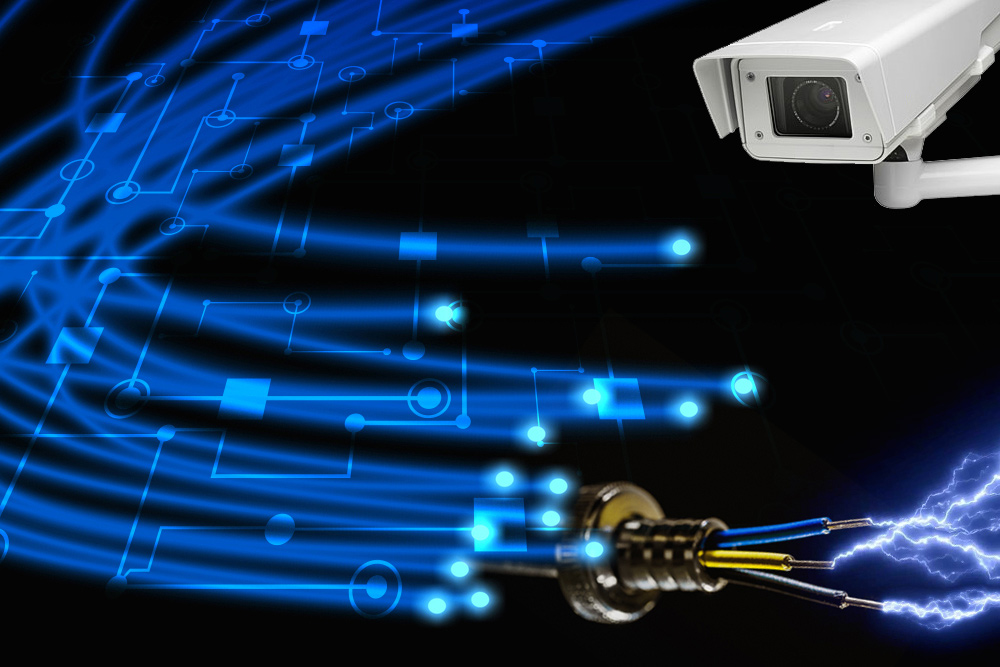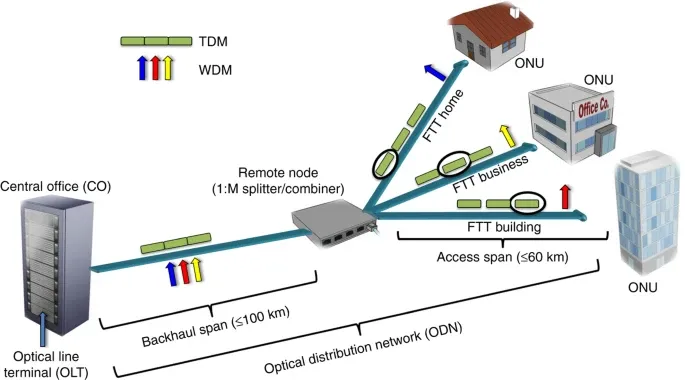Why Fiber Optic Protection Solutions Are the Future of Defense
The change to fiber optic security systems marks a considerable development in the world of defense, driven by their phenomenal information transmission abilities and durability to outside disturbances. These systems not just assist in faster and more dependable communication but likewise provide a cost-effective option with lowered maintenance requirements. As the landscape of protection develops together with emerging technologies such as AI and IoT, the potential for optical fiber to boost and redefine safety and security infrastructures becomes significantly evident. The ramifications of these improvements elevate important inquiries regarding the future of protection steps and their effectiveness in an ever-changing setting.
Advantages of Fiber Optic Solutions
Among the main benefits of fiber optic systems is their superior data transfer capability, which promotes the transmission of big volumes of information over cross countries without substantial loss. This characteristic is specifically advantageous for safety applications that require the continuous surveillance and transfer of high-definition video feeds, sensor information, and other vital info. Fiber optics can fit the growing needs of modern-day safety and security systems, guaranteeing that information remains intact and dependable.
In addition, fiber optic wires are much less susceptible to electromagnetic disturbance, which can be a significant problem in atmospheres with different electronic devices. This resistance boosts the stability of the data being transmitted, consequently reducing the danger of information violations or system failures. Additionally, fiber optic systems are naturally more protected than typical copper wires, as using a fiber optic line without discovery is exceptionally hard.
The resilience of fiber optic wires additionally adds to their charm. They are immune to environmental factors such as dampness and temperature level fluctuations, decreasing upkeep expenses and enhancing system long life. On the whole, these benefits position fiber optic systems as a robust and efficient choice for modern security infrastructures, making sure reliable and safe and secure data transmission.
Boosted Data Transmission Speed

The capability to transmit huge quantities of data promptly helps with the seamless integration of high-definition video feeds and progressed analytics. Safety and security systems can currently process and evaluate info in real-time, enhancing feedback times and situational recognition. Furthermore, fiber optic connections support longer transmission distances without destruction of signal high quality, making them suitable for expansive safety networks.
The raised rate of fiber optic systems not only improves the effectiveness of security procedures but also decreases latency. This is especially vital in critical situations where timely decision-making can prevent safety violations or reduce prospective hazards. As companies continue to prioritize safety and security and efficiency, the demand for fast and reputable information transmission will most certainly strengthen fiber optic systems as a keystone of modern safety infrastructure.
Resistance to Disturbance
Fiber optic protection systems regularly show exceptional resistance Go Here to electromagnetic disturbance, an essential benefit in environments vulnerable to digital noise. Unlike typical copper cables, which can be adversely influenced by electro-magnetic areas, superhigh frequency interference, and various other kinds of electric disturbance, fiber optic cable televisions make use of light to send data. This fundamental residential property ensures that the signals remain clear and unaltered, no matter surrounding digital activity.
Using glass or plastic fibers in fiber optic modern technology creates a barrier versus disturbance, enabling trusted data transmission also in difficult situations such as commercial facilities, city locations with high electronic website traffic, or locations near radio towers. This characteristic significantly lowers the likelihood of signal degradation or loss, making fiber optic systems particularly suitable for safety applications where honesty and accuracy of information are extremely important.
Additionally, this resistance to interference enhances the overall performance and integrity of safety systems, guaranteeing that surveillance and sharp systems operate flawlessly. In a world where security is progressively intimidated by innovative modern technologies, the strength of fiber optic systems attracts attention as a critical function, reinforcing their status as a necessary part of modern safety and security infrastructure.
Cost-Effectiveness Gradually
Considerable expense financial savings can be attained gradually with the application of fiber optic security systems. While the initial financial investment might appear higher compared to conventional copper-based systems, the long-lasting economic benefits emerge through lowered functional and upkeep expenses (fiber security). Fiber optic cables are inherently much more resilient and much less susceptible to environmental variables, which translates to lower substitute and repair work expenses over their life expectancy
In addition, fiber optic systems need much less power to operate, which better lowers energy expenses. Improved data transmission abilities enable less repeaters and amplifiers, decreasing equipment investment and simplifying installation procedures. The scalability of these systems additionally contributes to cost-effectiveness, as organizations can increase their safety framework without incurring considerable extra expenditures.
Another element to take into consideration is the raised performance in surveillance and reaction capabilities that fiber optics provide. Enhanced real-time data transmission can bring about quicker incident reaction times, possibly mitigating losses and liabilities related to safety breaches. Altogether, the lasting advantages of fiber optic safety systems not only warrant the initial expenditure but also position them as a monetarily prudent option for organizations looking for durable security options.

Future Technologies in Safety
Progressing innovations are set to transform safety systems, integrating expert system (AI) and machine understanding to improve threat discovery and action capacities. These advancements will certainly allow safety systems to evaluate vast quantities of data in try here real-time, determining patterns and abnormalities that show possible risks. This aggressive technique will make it possible for faster decision-making and much more efficient case reactions.
In addition, the unification of the Internet of Points (IoT) is leading the means for interconnected safety gadgets, providing extensive security and surveillance. Smart sensing units can pass on info concerning ecological adjustments, while automated signals can notify protection personnel immediately of suspicious activities.
Moreover, the advancement of biometric technologies will certainly additionally reinforce safety and security mechanisms. Facial recognition, finger print scanning, and retina identification are coming to be more sophisticated, offering layers of verification that are difficult to bypass.
Final Thought
Finally, fiber optic safety systems represent a significant improvement in protection technology, using unparalleled information transmission rate, resistance to electro-magnetic disturbance, and lasting cost-effectiveness. As the need for sophisticated safety services continues to grow, the integration of optical fiber with emerging modern technologies such as AI, IoT, and biometrics will certainly further boost safety frameworks (fiber security). The combination of these technologies will guarantee a much more safe and responsive environment, strengthening fiber optics more tips here as a cornerstone of future safety and security systems